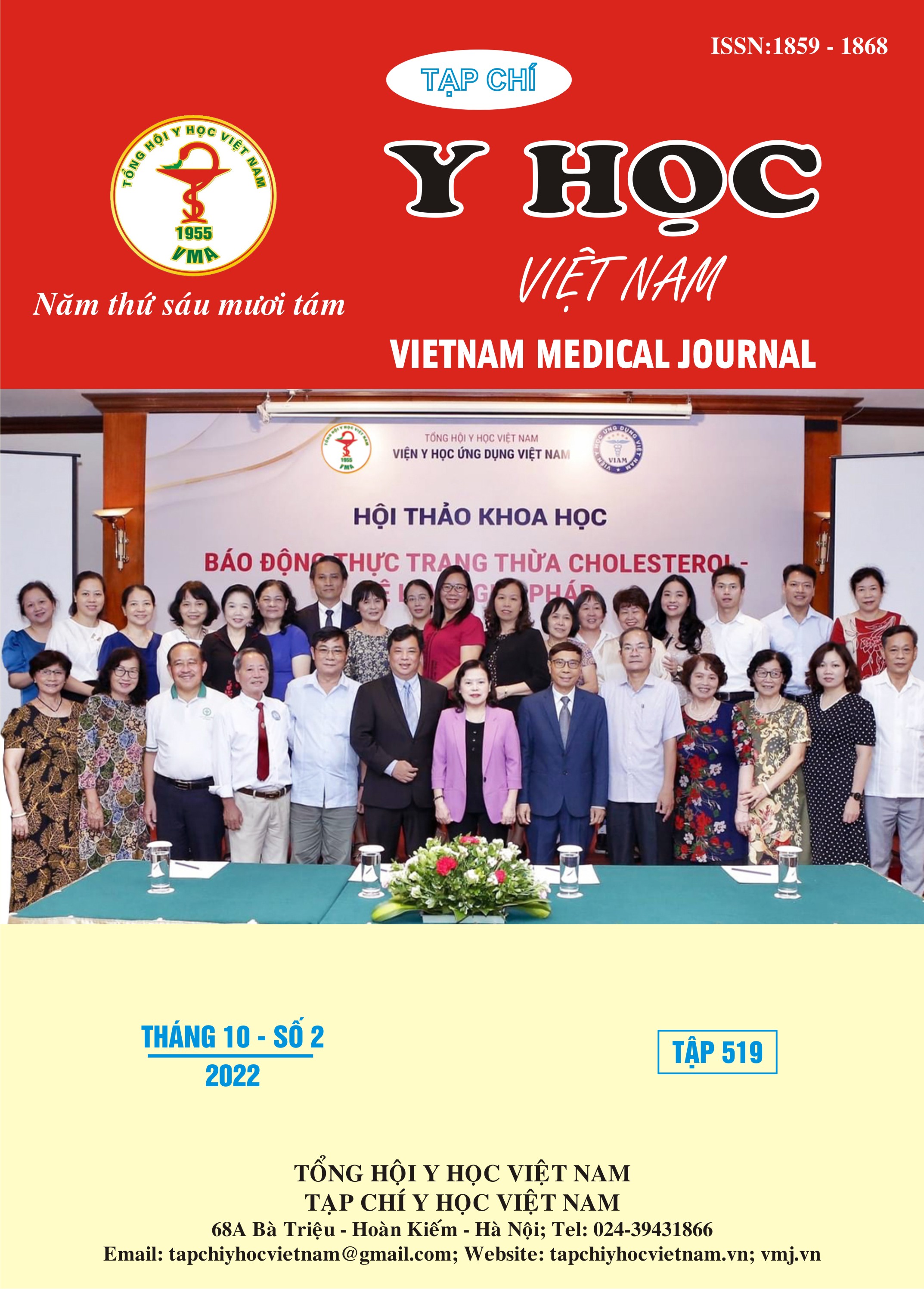STUDY ON ACUTE TOXICITY OF THE STANDARDIZED EXTRACT OF NUCIFERINE CONTENT FROM LOTUS LEAVES (NELUMBO NUCIFERA GAERTN.) IN EXPERIMENTAL ANIMALS
Main Article Content
Abstract
Background: In the treasure of Vietnamese medicinal plants, the Lotus (Nelumbo nucifera Gaertn., Nelumbonaceae) is one of the few herbs whose components are highly valuable medicines. Many modern pharmacological studies proved that the Lotus leaf extracts have many biological activities in vivo, such as insomnia, anti-obesity, inhibiting the growth of cancer cells, and antioxidant effects related to the presence of nuciferine in lotus leaves. Currently, there are many preparations made from the raw materials of Folium Nelumbinis that are becoming more and more popular. However, almost no studies evaluate the acute toxicity of the standardized extract of nuciferine content from Lotus leaves. Therefore, conducting an acute toxicity test of a controlled high level of nuciferine is very necessary to establish safe dose levels. Objectives: This study investigated the acute toxicity of the standardized extract of nuciferine from Folium Nelumbinis in Swiss albino rats for evaluating its safety profile. Materials and method: Acute toxicity was determined in mice with Swiss albino strain, orally, in a fixed dose model, following the guidelines of the Ministry of Health and Do Trung Dam. The initial test dose limit is 50 g/kg/time only. Results: During the 72h and 7 days observation periods, rats did not show any behavioral, feeding, or urinary toxicity, and none of the mice died. Conclusion: The product did not show acute oral toxicity in mice with the maximum oral dose of 50 g/kg, equivalent to 233,75 g in humans of 55 kg. Hence, the extract can be utilized safely for therapeutic use in pharmaceutical preparation.
Article Details
Keywords
acute toxicity, LD50, nuciferine, Folium nelumbinis, standardized extract
References
2. Đỗ Tất Lợi (2004). Những cây thuốc và vị thuốc Việt Nam, Nhà xuất bản Y học Hà Nội, tr. 783- 786.
3. Đỗ Trung Đàm (2014), “Phương pháp xác định độc tính cấp của thuốc”, Nhà xuất bản Y học, Hà Nội.
4. Nguyễn Thị Nhung (2001), Nghiên cứu đặc điểm thực vật, thành phần hóa học và tác dụng sinh học của cây sen (Nelumbo nucifera Gaertn.) họ sen (Nelumbonaceae), Luận án tiến sĩ dược học, Đại học Dược Hà Nội.
5. E Macko et al (1972), Studies on the pharmacology of nuciferine and related aporphines, Archives Internationales de Pharmacodynamie et de Therapie., 197(261), p. 261 – 273.
6. Farrell MS, McCorvy JD, Huang X-P, Urban DJ, White KL, Giguere PM, et al. (2016) In Vitro and In Vivo Characterization of the Alkaloid Nuciferine. PLoS One 11(3): e0150602. doi: 10.1371/journal.pone.0150602
7. K Hoa Nguyen, T Nhan Ta, T Hong Minh Pham (2012), “Nuciferine stimulates insulin secretion from beta cells-an in vitro comparison with glibenclamide”, Journal of Ethnopharmacology, 142(2), pp. 488-95.
8. Ming-Jiuan Wu, Lisu Wang, Ching-Yi Weng, Jui-Hung Yen (2003), “Antioxidant activity of methanol extract of the lotus leaf (Nelumbo nucifera Gertn.)”, The American Journal of Chinese Medicine, 31(5), pp. 687-689.


